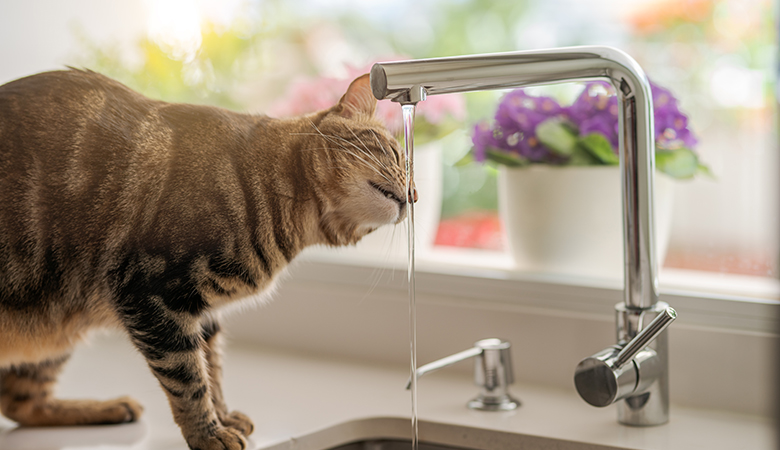Bladder problems in cats
Written by Tommy |
Cats are susceptible to problems in their urinary system. Not only is this very painful, it’s potentially also very dangerous. How to recognise symptoms of bladder problems in cats?

Common bladder problems in cats
There are several common bladder problems in cats. These problems often start with a bladder infection. If this goes untreated, it can result in other problems, such as:
- Bladder stones
- Urinary tract infection
- Renal pelvis inflammation
- Urinary tract blockage
It doesn’t always start with a bladder infection. Some cats just have a natural predisposition for developing bladder problems. The minerals that are naturally present can crystallise and cause bladder stones. These bladder stones can cause a blockage. This is always an emergency and you should see your veterinarian immediately when you suspect your cat has bladder stones.
Recognising bladder problems in cats
Cats are excellent at hiding their pain. This makes it difficult to find out exactly what’s happening. When you suspect the following symptoms in your cat, you should always see a veterinarian:
- Using the litter box more frequently
- Plaintive meowing while using the litter box
- Excessive licking of genitals
- Urinating takes longer
- Visiting the litter box without urinating
- Leaking small amounts of red-coloured urine (blood)
Which cats are more at risk?
Did you know some cats are more at risk for bladder problems? Mainly overweight cats or older cats are more likely to develop bladder problems. Even inside cats who are sensitive to stress are more predisposed to developing bladder problems.
What should you do when your cat has bladder problems?
It’s very unfortunate when your veterinarian diagnoses your cat with bladder problems. Thankfully there are a lot of ways in which you can support your cat. Think of diet food specifically for bladder stones, a supplement, like Dr. Ann’s Urinary Tract Care, or medication.
Are you not sure your cat has bladder problems? Use a urine collecting kit to collect urine for your veterinarian to check. This way you know what’s going on.
Preventing bladder problems in cats
Stimulating your cat to drink diminishes the chance of bladder problems. Cats aren’t great drinkers naturally, so it may take some effort. These are a couple of tricks to stimulate your cat to drink:
- Place bowls with (fresh) water in several places
- Preferably use a big water bowl, so the whiskers won’t touch the sides
- Does your cat like running water? Use a pet fountain.
- Up your cat’s fluid intake by giving him wet food mixed with water
Do you have more questions about urine problems in cats? Contact our veterinary team at veterinarian@vetsend.co.uk.



